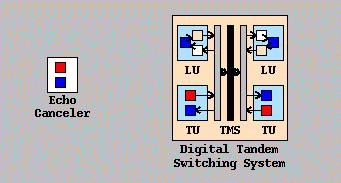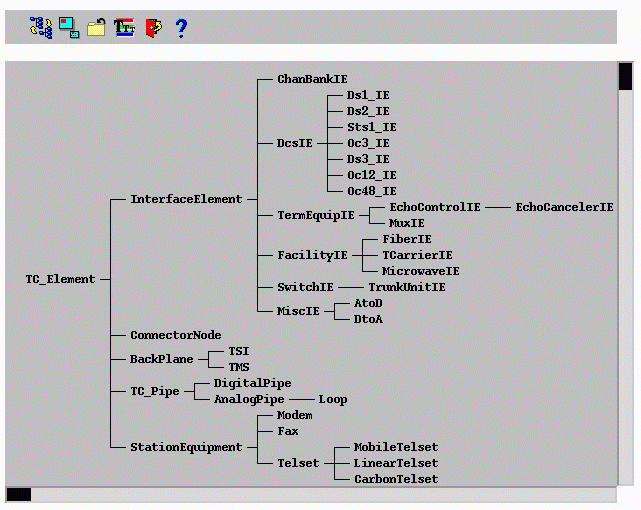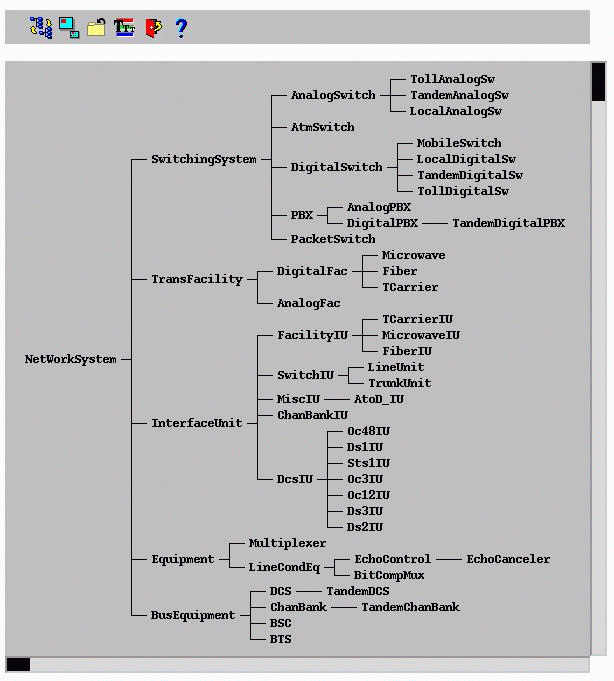Chapter Contents
Previous
Next
|
Chapter Contents |
Previous |
Next |
| Telecom Environment |
As discussed in Chapter 2, "User Interface Features,"
there are two types of equipment models in netWorks -
simple and compound.
To be consistent with telecom terminology,
compound equipment models are referred to as systems in the
telecom environment.
A system configuration may be fairly simple like the
Echo Canceler model
or a bit more detailed like the Digital Tandem Switching System.
See Figure 3.1.

As mentioned in Chapter 2, "User Interface Features," only simple equipment models have attributes associated with them and only simple equipment models can be connected by arcs. The primary purpose of systems (compound models) is to speed the model network creation process and add visual cues to the network representation.
Both families of simple equipment models and systems employ
the notions of hierarchy and inheritance.
These hierarchies can be represented as trees, with the simpler models
serving as building blocks for the more detailed models.
Figure 3.2 shows the simple equipment model hierarchy.

Each simple equipment model has a list of attributes associated with it, and the inheritance paradigm provides a convenient means of propagating attributes throughout the model tree. For example, by using inheritance, any attributes defined on the TC_Element model will be available in all subsequent models, like InterfaceElement and SwitchIE. Similarly, any attribute additions or modifications made to intermediate models in the hierarchy will be reflected in all other models derived from them. For example, when the attribute Length is added to the TC_Pipe model, it is automatically inherited by DigitalPipe, AnalogPipe, and Loop models as well.
In the systems hierarchy, the models inherit configurations instead of attributes. A configuration is a template defining how many components a system will have and how those components are connected with arcs. Some configurations supply no internal arcs while, with others, the internal arcs are critical to the system's implementation. Unlike with simple equipment models, you cannot change the configuration of a system -the location of a system in the systems hierarchy determines its configuration. The default systems hierarchy is shown in Figure 3.3.

|
Chapter Contents |
Previous |
Next |
Top |
Copyright © 1999 by SAS Institute Inc., Cary, NC, USA. All rights reserved.